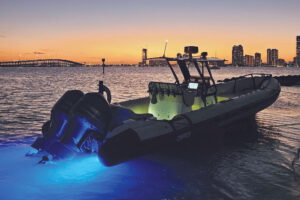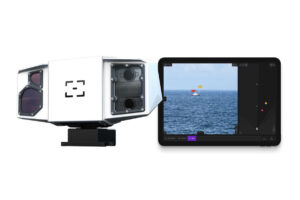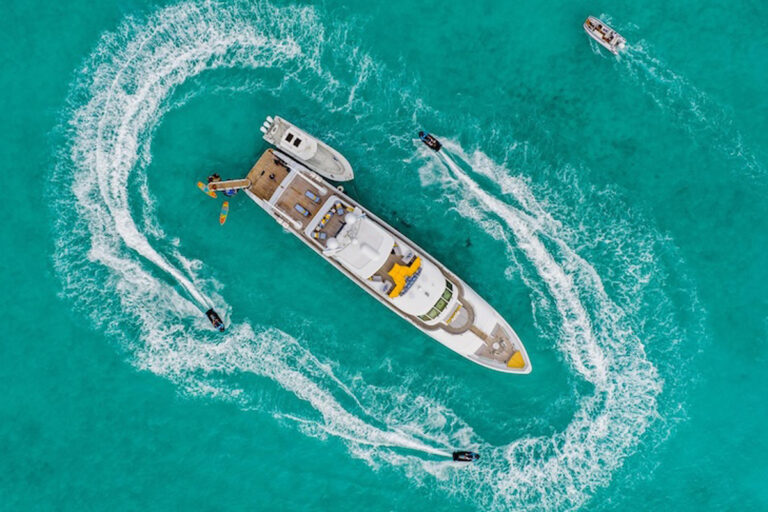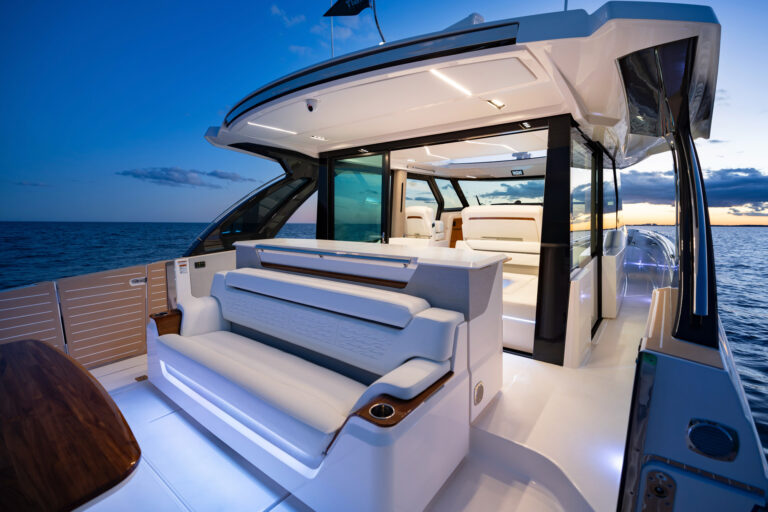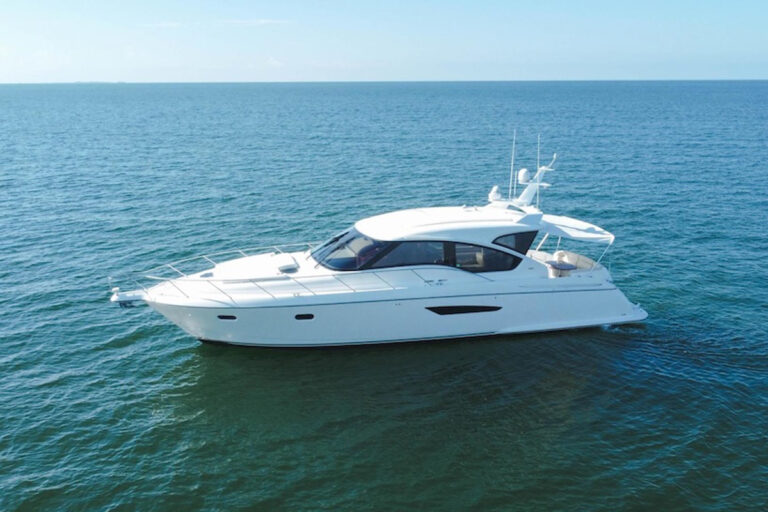
The image is iconic: a tightly tethered helmsman, white knuckles on the windward steering wheel, as the bow of his carbon-fiber Volvo Ocean 65 racing sailboat pierces the backside of a massive Southern Ocean wave. A wall of green water roars back at the on-watch crew, and the helmsman battles to maintain steerage. He rivets his attention on the electronic displays, never daring to glance astern. Then, just as gravity returns to a wildly stressful situation, the boat’s stern lifts and the sleigh ride commences anew, resubmerging man, machine and marine electronics into a saltwater bath that’s barely above freezing. Simply surviving here is risky business, but to engage the Southern Ocean as part of the infamous Volvo Ocean Race, where all skippers routinely push their boats, crews and equipment to near breaking points, is the marine world’s ultimate acid test.
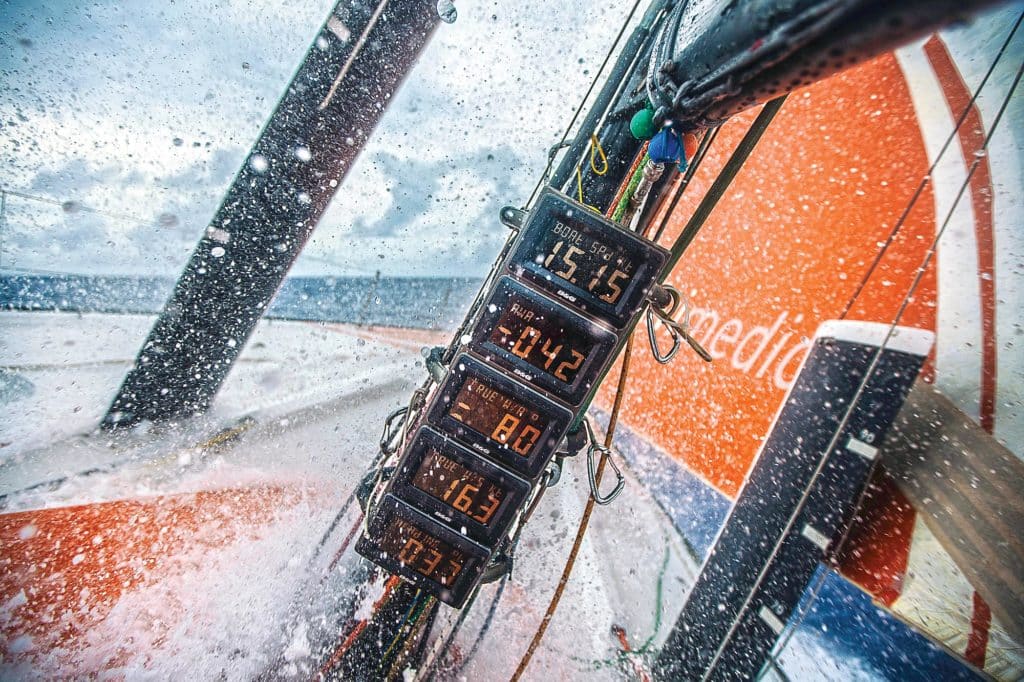
The Volvo Ocean Race (VOR; nee the Whitbread Round the World Yacht Race) began in 1973 as a fully crewed competition that circumnavigated the globe in a series of marathon legs punctuated by pit stops. Teams could select their warhorses and crews, but winning required an elusive combination of speed, drum-tight teamwork and strong leadership, as well as a yacht capable of sustaining round-the-clock, weather-induced drubbings.
As the VOR is a sailboat race and B&G is a sailing-focused brand, Navico — B&G’s parent company — has long supplied this sometimes-boat-breaking event with equipment as a way to torture-test products. Navico then shares the results across its other brands, including Simrad, whose helm electronics are installed aboard many motoryachts and sport-fishermen.
Much has changed since Ramón Carlín, a novice sailor, mustered a green-but-loyal crew of friends and leveraged his formidable leadership skills to skipper Sayula II, his Swan 65, to a convincing victory in the inaugural race. But the 45,000-mile VOR, whose 2017-18 edition starts this month in Alicante, Spain, presents the same grueling challenges as the 1973-74 race did, just with significantly higher speeds and less margin for error.
Today’s VOR still employs legs and stopovers, but the sailors are now professionals, and the boats are identical Farr-designed 65-footers that carry matching equipment and B&G-supplied electronics, creating a level playing field.
B&G became involved in year one, when Carlín used the company’s electronics aboard Sayula II. The brand has been utilized ever since. For the past 16 years, it has supplied every VOR entrant and, since 2014, has supplied the race with identical electronics for each yacht.
“The systems that go on the boats, outside of software tweaks, are nothing but production models,” says Alan Davis, B&G’s product line director. B&G was involved with the Volvo Ocean 65s from their design-brief stage, he says, and helped define the fleet’s identical schematics. This high-level involvement lets B&G troubleshoot problems from afar: The boats carry FleetBroadband satellite-communications systems that constantly upload telemetric data to the VOR’s cloud servers, giving B&G backdoor access.
“We can tell if one system is behaving differently,” says Davis, adding that the company can also supply targeted tech support, irrespective of latitude and longitude. “We haven’t done it in a race, but we’ve done it lots in training.”
B&G supplies off-the-shelf Zeus3 multifunction displays (MFDs), Broadband 4G Radars, NAIS-400 Class B AIS transceivers, 20/20 HV instrument displays, Precision-9 solid-state compasses and various sensors (including wind, rudder angle, keel angle, temperature, speed, depth, barometric pressure, vessel motion and GPS position).
Perhaps most important, the company also supplies B&G’s third-generation WTP3 black-box processor, which removes vessel motion from wind data and supports multidimensional calibration tables to try and achieve the “holy grail” (as Davis puts it) of “perfect” true wind data. WTP3 has an open-source operating system, allowing navigators to write their own JavaScript code to add custom functionality, one of the race’s few customizable systems.
While higher numbers usually portend greater protection levels (think sunscreen), weatherproof ratings are different. Submerging a piece of equipment — to meet the IP67 standard — may equalize pressure on all apertures, which can squish shut semiporous seals. “Fire-hosing” something (to meet the IP66 standard) is a tougher test, but one that’s far more realistic for marine conditions. Thanks to Navico’s Volvo Ocean Race relationship, the company has learned that it’s sometimes smarter to design electronics to IP66 standards, and IP67, to ensure the product’s survival at sea.
While most power cruisers’ eyes might (rightly) glaze over at what appears to be a boutique-level sailing kit, Navico sells most of this same hardware under its Simrad brand, including Navico’s Broadband 4G Radars, Class B AIS transceivers, Precision-9 compasses, various sensors and the MFDs themselves. Given that Volvo boats are capable of powerboat speeds (low 40 knots) in the right conditions, the race closely mimics normal running conditions for powerboats, and for significantly longer periods (read: 12,500 nautical miles in the Southern Ocean).
“It helps [Navico’s] other brands, with real-world experience in extreme conditions,” says Davis, adding that the race also facilitates a dialog between B&G and world-class navigators. “We learn their frustrations and their needs. We can fix some of it on the spot, but most of this is fed into future products and software updates.”
This feedback has led to product improvements, such as during the 2011-12 VOR, when radomes experienced water ingress in extreme conditions. That problem led Navico to redesign the housing across all of its brands.
Another example of a design upgrade is the electronic display at the base of a cockpit-mounted grinding pedestal, which gets submerged each time the cockpit fills. According to Davis, B&G experienced condensation problems with its older-generation displays during the VOR, as competing boats spend significant parcels of time wet, underwater or in sweltering tropical humidity. The solution, unveiled in 2007, was optically bonded displays, which Navico now employs across all of its product lines.
Hardware isn’t the only thing pressed to its limits in the VOR. The amount of continuous hours teams spend hammering their electronics also tests the software’s stability and performance.
“When you do enough miles and use the software constantly, it will lead to the first failure,” Davis explains.
Volvo teams regularly sail 200 days a year, often on a 24/7 basis, generating usage hours that few other yachstmen ever touch. “[VOR navigators] will find potential weak points before anyone else,” he says.
The key for Navico, of course, is to use the feedback to correct problems before they become issues for recreational-level yachtsmen. After all, if the equipment can survive 45,000 nautical miles of wallopings, including frequent Southern Ocean bow stuffings, then the odds are excellent that it will handle a big week of cruising or sport fishing.



